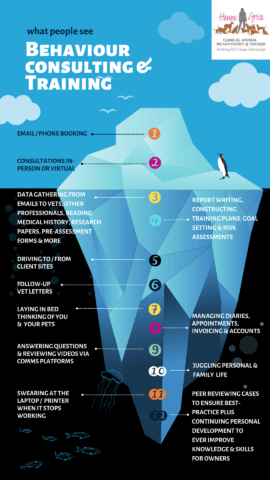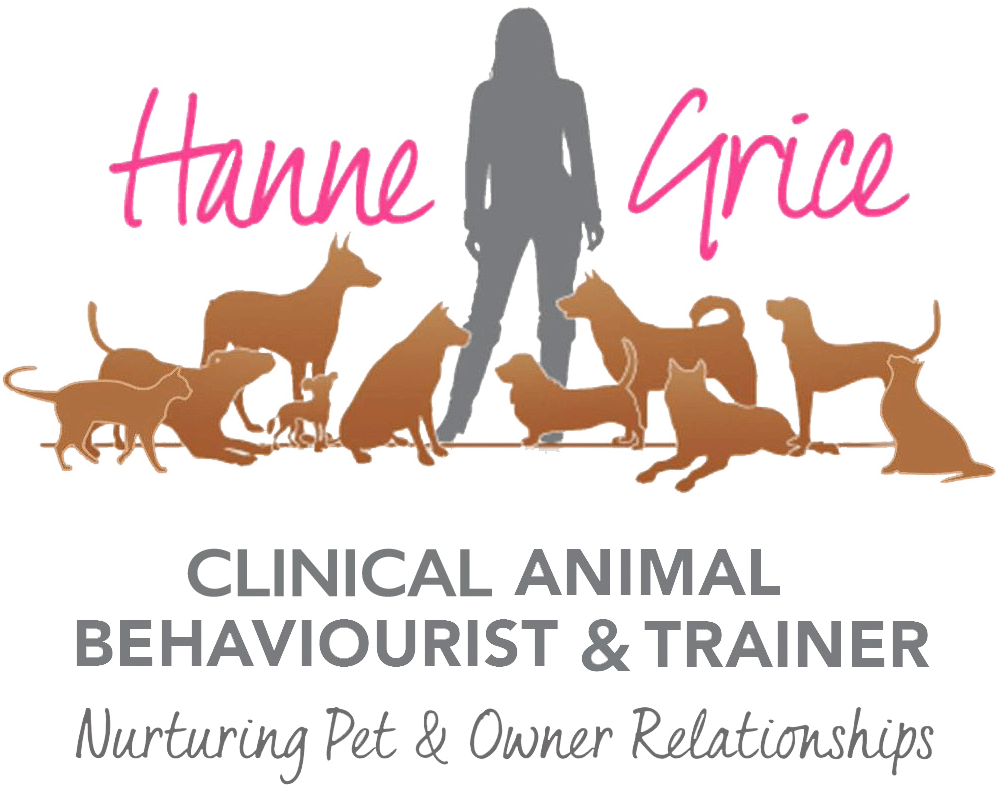Animal behaviourists and trainers play a crucial role in enhancing the well-being of animals and fostering harmonious human-animal relationships. However, the demanding nature of our work can lead to burnout – a state of physical and emotional exhaustion. Burnout affects professionals across many fields, and animal behaviourists and trainers are not exempt. Plenty of research highlights this issue within the veterinary field (Lovell and Lee, 2013; Chigerwe et al., 2014; Neill et al., 2022), but there is a lack of data on animal practitioners within the training and behaviour industry. Consequently, this article explores what burnout is in brief, how it applies to those of us working as animal behaviourists and trainers, and some practical strategies to reduce its likelihood.
Understanding Burnout
Burnout is a psychological condition that arises from chronic workplace stress. It is characterised by emotional exhaustion, depersonalisation, and reduced personal accomplishment. As animal behaviourists and trainers, we often face demanding workloads, emotional strain, and long working hours, which can contribute to burnout. We often encounter challenging cases, deal with difficult animal behaviours, as well as have to handle complex human owner/carer attitudes and beliefs, and often work in unpredictable environments, all of which can take a toll on our well-being.
Some of the most common factors that make animal practitioners susceptible to burnout include but are not limited to:

- Emotional Intensity: We work closely with animals and their owners, dealing with emotionally charged situations. We may witness animal suffering, human-animal conflicts, human-human conflicts, and even animal abuse cases, all of which can lead to emotional exhaustion.
- High Workload: We typically have multiple clients, each with their own set of unique needs. The fall-out from the COVID-19 pandemic has led to an increase demand services where many more pets were acquired and a combination of unscrupulous breeders, lack of socialisation opportunities and in-person training, along with a rise in inappropriate information being posted on social media platforms, has resulted in an increase in pet behavioural problems being reported and relinquishment to rehoming organisations, particularly for puppies born during this period (Packer et al., 2021). In addition to the demand for services, practitioners are managing appointments, consultations, assessments, training sessions, producing behavioural reports, training plans, veterinary reports plus supporting clients in follow-ups, answering general enquiries and more, can lead to high workloads and increased stress levels. Check out my Iceberg graphic (left) which highlights what practitioners may typically do and what others may only ‘see’.
- Physical Demands: Animal behaviourists and trainers frequently engage in physical activities such as handling animals (which may include defensive handling), setting up equipment and classes, conducting training sessions and classes, and addressing behaviour issues in-person and or virtually, and any associated travel. The physical demands of the job, together with balancing home life, children and or animals, plus other commitments, can contribute to fatigue and exhaustion.
Preventing Burnout in Animal Behaviourists and Trainers
Recognising the importance of preventing burnout in our profession is crucial for the well-being of ourselves and those we work with (humans and the animals). While this is not an exhaustive list, below highlights some quick and effective strategies to reduce the likelihood of burnout.
- Self-Care: Prioritise self-care practices such as regular exercise, sufficient sleep, and maintaining a healthy diet. For me the latter can be a challenge when grabbing food ‘on the go’, however, to the detriment of myself (see my article ‘Did my pets know I was ill before I did?’), I have learnt that a well-balanced diet is important. Do engage in activities that promote relaxation and stress reduction, such as mindfulness exercises, hobbies, and spending time in nature – away from clients/others.
- Establish Boundaries: Set clear boundaries between work and personal life. Consider separate work/personal devices. Define specific working hours and avoid overcommitting to clients or projects. Allow yourself time for rest, relaxation, and leisure activities. Set aside a working day in the week for ‘admin’ – report writing, training plans, accounts, CPD, and so on. Addition, set any communication channels to return automatic replies out of hours, and avoid the temptation of quickly sending a reply outside of these hours. Instead, set up emails to be delivered within 9am-5pm office hours even if you are working late; if clients see you replying at all times of the day, they will consider that it’s fair game to message at all hours. Consider at the bottom of your emails your contact times to avoid calls/texts/WhatsApp messages all times of day and across the weekend.
- Seek Support: Cultivate a support network within the professional community. Attend conferences, workshops, or seminars in person or virtually to connect with peers and mentors. Engaging in professional supervision/mentoring or counselling can also provide valuable support and guidance.
- Practice Stress Management Techniques: Incorporate stress management techniques into your routine, such as deep breathing exercises, meditation, yoga or Pilates etc. These practices can help reduce stress levels and promote overall well-being.
- Continual Professional Development: Stay updated with the latest research and developments in the field. Engage in professional development activities to enhance your knowledge and skills. This can increase your confidence and job satisfaction, reducing the risk of burnout. Check out my online Learning Hub which features bespoke courses for animal professionals as well as owners/carers. More courses are launching over the coming weeks, so keep coming back to the website.
Key take-aways
Burnout is a significant concern and shared in the animal behaviour and training industry, much like it is within veterinary practice, given the demanding nature of our work. By understanding the causes and recognising the signs of burnout, animal professionals can take proactive steps to prevent it. Prioritising self-care, establishing boundaries, seeking support, practicing stress management techniques, and investing in professional development are effective strategies to reduce the likelihood of burnout. By taking care of our own well-being, we can continue making a positive impact on the lives of the animals within our care and their human companions.
References:
- Maslach, C., Schaufeli, W. B., & Leiter, M. P. (2001). Job burnout. Annual Review of Psychology, 52(1), 397-422.
- American Psychological Association. (2019). Understanding and preventing burnout. Retrieved from https://www.apa.org/monitor/2019/10/ce-corner-burnout
- Törnqvist, E., & Aho, A. (2019). What is professional burnout and how to prevent it? International Journal of Qualitative Studies on Health and Well-being, 14(1), 1605709.
- Baer, D. M. (2003). Should animal behaviorists work with animal trainers? Journal of Applied Behavior Analysis, 36(2), 145-148.
- Steg, L., & Vlek, C. (2009). Encouraging pro-environmental behaviour: An integrative review and research agenda. Journal of Environmental Psychology, 29(3), 309-317.
- Bartram, D. J., & Baldwin, D. S. (2012). Veterinary surgeons and suicide: A structured review of possible influences on increased risk. Veterinary Record, 171(19), 465-470.
- Reis, D., & Wirth, O. (2016). Impact of burnout on self-efficacy beliefs in patient–teacher communication among physicians in training. Patient Education and Counseling, 99(4), 597-603.
- Boekamp, J. R., & Zins, J. E. (2003). Work, stress, and burnout among animal control officers. Journal of Aggression, Maltreatment & Trauma, 7(1-2), 7-29.
Learn more about our classes

Get Hanne's book, clothing and more
Hanne has a number of publications including her book Playing With Your Dog to help owners work out the games that are best suited for their pet to play throughout his life, from puppyhood to old age, available from Amazon. Check out Hanne's range of contemporary casuals The Collection – for pet lovers made from recyclable, organic materials that are sustainably sourced.

